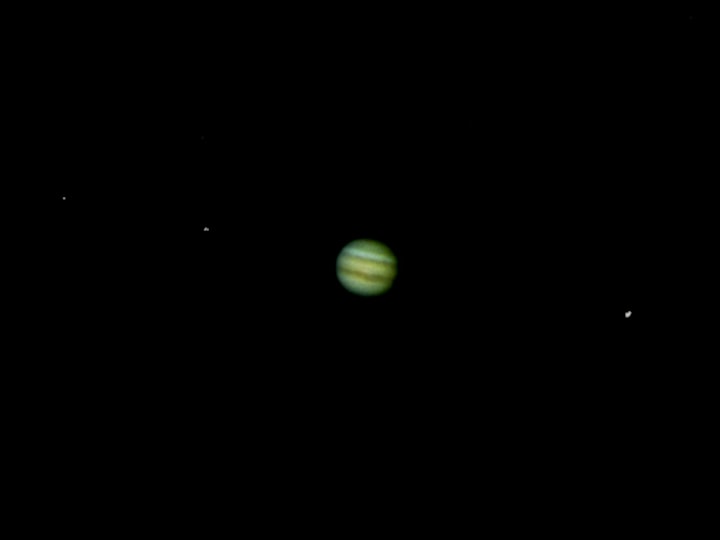First human planetary defense experiment successful.
This NASA collision changed the orbit of a planet
At 7:14 a.m. Beijing time this morning, humans took the initiative to change the orbit of an asteroid satellite with a flying vehicle.
According to the meteorite impact, about 65 million years ago, an asteroid 10 kilometers in diameter and the size of a medium-sized city fell from the sky. It crashed into a huge crater on the Earthcausingflashh floodssplummetintemperaturesse,s and leaving the planet without sunlight for years as it was shrouded in dust. The dinosaurs, the dominant species of the Earth at the time, were unable to adapt to the intense environmental changes and eventually became extinct.

This is a widely known conjecture, but in reality, objects do not hit the Earth only once in tens of millions of years: every year, a large number of asteroids hit the Earth, and the vast majority of them break up in the Earth's atmosphere.
Theoretically, the risk of an asteroid impact does exist, and the asteroid impact in Chelyabinsk, Russia, on February 15, 2013, caused a wave of fear.
To avoid a dinosaur-like tragedy, various methods have been studied to prevent asteroid impacts on Earth.
Now, in what NASA calls the world's first "planetary defense" test, an unmanned spacecraft launched from Earth has successfully impacted an asteroid during NASA's Double Asteroid Redirect Test (DART).
The impacted asteroid was named Dimorphos, and the Earth-launched spacecraft successfully used the impact to push the planet out of its original orbit, providing a reference for future efforts to stop dangerous stars from hitting Earth.
Dimorphous is an asteroid satellite orbiting the near-Earth asteroid Didymos, which astronomers discovered more than two decades ago and which means "twin" in Greek. 780 meters wide and 160 meters in diameter around it, Didymos' name means "two forms".
Since the asteroid system is not a threat to the Earth, it could be a good target for experiments. At the time of impact, they were relatively close to Earth - less than 11 million kilometers away.
"As far as we know, our first planetary defense test was successful," said Elena Adams, a DART mission systems engineer at Johns Hopkins University Applied Physics Laboratory (JHUAPL), after the successful impact. "I think the people of Earth can sleep well because of this. Of course, I do."
The DART experiment was the first attempt at planet deflection technology aimed at protecting Earth. For the first time, we can measurably change the orbits of objects in the universe," said Robert Braun, head of the space exploration division at Johns Hopkins University's Applied Physics Laboratory.
Although the targets one chooses are small, a fast impact would change the speed of Dimorphos' orbit around Didymos by only 1 percent, which doesn't sound like much, but the change is enough to be observed through a telescope.
In its original orbit, Dimorphos orbits Didymos once every 11 hours and 55 minutes. Scientists will need about two months to determine whether the asteroid's orbit has changed, DART team members said.
Space-based telescopes such as Hubble, Webb, and the Lucy mission also focused on observing the event.
The DART mission spacecraft hit Dimorphos at 14,000 mph on Sept. 26 at 7:14 p.m. EDT. For the impact, the spacecraft departed from Earth back late last year, weighing about 610 kilograms at launch. It carried about 50 kilograms of hydrazine propellant for spacecraft braking and attitude control, and about 60 kilograms of xenon to operate the Ion Propulsion Technology Validator.
About an hour before impact, the spacecraft's navigation system locked onto Dimorphous. the spacecraft's main camera sent a picture to Earth every second until the spacecraft hit the asteroid and the picture went black.
As DART approached Dimorphos, the asteroid transformed from a mysterious bright spot into a detailed landscape of boulders, cliffs, and shaded terrain.
The following image was taken by the spacecraft about 20 minutes before impact and includes the binary system of Didymos (large) and Dimorphos (small).
A clearer and more specific view of the Dimorphos asteroid can be seen from the spacecraft's viewpoint just two minutes before impact.
In the scenario of changing the asteroid's orbit, methods such as putting thrusters on the planet and using large-yield nuclear weapons to blast it have been investigated, but the spacecraft on this DART mission generated very little noise; it was about the size of a golf cart. Each side of the spacecraft has a solar panel that is about 8.5 meters long when fully deployed.
After impact, the spacecraft is planned to leave a 10- to 20-meter "crater" on Dimorphous. Since the spacecraft itself was destroyed after the 'suicide impact', changes to the surface of Dimorphos will be recorded from the air by the companion CubeSat LICIACube provided by the Italian Space Agency. Three minutes after the impact, the small satellite will fly over Dimorphos to capture images and video. These images, while not immediately available, will be transmitted back to Earth in the days and weeks following the collision.
The DART mission is the first demonstration of the Kinetic Energy Impactor, NASA's planetary defense program designed to ram spacecraft into asteroids to change their orbits. The mission collected real asteroid impact data for the first time, which will be fed into a computer model in the future to measure, among other things, how large a spacecraft and how fast it would need to travel to defend against an asteroid with an impact risk to Earth.
According to NASA research, about 40 percent of large asteroids, capable of reaching 140 meters or more in diameter, could pose a threat back to Earth. If a potentially hazardous asteroid is detected 5 or 10 years before the expected impact, the Kinetic Impactor approach can be effective in protecting the Earth
About the Creator
Christiane Augsburger
Explore the unknown secrets with me and bring you to know a whole new world







Comments
There are no comments for this story
Be the first to respond and start the conversation.